CLASSIC MANGA ARTISTS
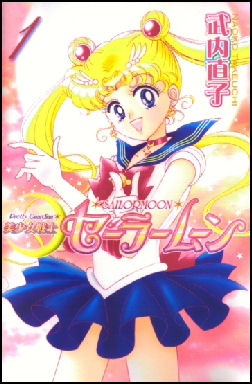
Legendary manga artists include Osamu Tezuka, creator of Astroboy and Black Jack; Akira Toriyama, creator of the “DragonBall” series; Katsuhiro Otomo, the father of “Akira”; Naoko Takeuchi, creator of Sailor Moon”; and Mitsuteru Yokoyama and Shotari Ishinomori.
Shotaro Ishinomori (1938-1998) created the “Kamen Rider” series about a masked motorcycle-riding super hero, and “Cyborg 009" , about nine humans-turned-cyborgs. Mangaka Tatsuya Egawa, the author of popular Tokyo Daigaku Monogatari, also made "shunga" (pornographic pictures) that could never have been published in major magazines.
Fujiko F. Fujio (1933-96), who real was Hiroshi Fujimoto, was the creator of Doraemon. Until 1980 he worked with Fujiko Fujio, whose real name was Matoo Abiko. Both hailed from Toyama Prefecture and came to Tokyo together to find work. Yoshihiro Tatsumi is famous for autobiographical “gekiga” works that use realistic pictures, such as “Gekiga Hyoryu” which the New York Times called “a big fat, greasy tub of salty popcorn for anyone interested...in the theory and practice of Japanese comics.” Tatsumi began making a name for himself in the 1950s and reached his peak in the 1970s and is credited with making the gekiga style popular at that time.
The Tokiwa-so group refers to a group of legendary manga artists that lived in the same apartment building---Tokiwa-so---in Tokyo’s Toshima Ward in the 1950s. Members of the group included Osamu Tezuka, Shotaro Ishinomori, Fujio Akatsuka, Fujio Fujiko, and Hideko Mizuno. When they started they made so little money they pooled their money to buy a television.
Tokiwa-so resident Shinichi Suzuki, who became an anime director, told the Daily Yomiuri, “We used to get together in someone’s room and talk about films, books and of course manga. We all enjoyed friendship as well as inspiration as mangaka...All of us were from outside Tokyo and just about to make major debuts...It was the time when manga was viewed negatively and parents’ and teachers’ organizations accused it of having a bad influence on children. We were close and inspired each...Strangely, I remember nothing about the people who lived in Tokiwa’s first floor who had nothing to do with manga.” Tokiwa-so was demolished in 1982 and about half of the legendary figures that lived in it have passed away. The Tokiwa-so Project, started in 2006, was launched to provide low-cost housing for manga artists in Tokyo.
See Separate Article OSAMU TEZUKA, HIS LIFE, MANGA AND ANIME: ASTROBOY, BLACK JACK, BUDDHA AND AYAKO factsanddetails.com
Websites and Resources
Sailor Moon creator Naoko Takeuchi Good Websites and Sources: Black Jack Basics tezukainenglish.com ; Rumiko Takahashi Profile on furinkan.com furinkan.com ; Shigeru Mizuki and Kitaro on Anthropology of Manga and Anime anthja.com/aam ;Monkey Punch and Lupin III on Anime News Network animenewsnetwork.com ; Naruto, Official Site naruto.viz.com ; Rose of Versailles on Manga Fox mangafox.com/manga/rose_of_versailles
Links in this Website: MANGA Factsanddetails.com/Japan ; POPULAR TYPES OF MANGA Factsanddetails.com/Japan ; POPULAR MANGA AND FAMOUS MANGA ARTISTS Factsanddetails.com/Japan ; MANGA FANS AND COSPLAY IN JAPAN AND ABROAD Factsanddetails.com/Japan ; OSAMU TEZUKA, MANGA AND ANIME Factsanddetails.com/Japan ;ANIME Factsanddetails.com/Japan ; ANIME FILM AND TELEVISION SHOWS Factsanddetails.com/Japan ; HAYAO MIYAZAKI ANIME Factsanddetails.com/Japan ; MODERN JAPANESE FILM INDUSTRY Factsanddetails.com/Japan ; MODERN JAPANESE FILMMAKERS AND FILMS Factsanddetails.com/Japan ; MEDIA, RADIO, NEWSPAPERS AND TELEVISION IN JAPAN Factsanddetails.com/Japan ; TELEVISION PROGRAMS IN JAPAN Factsanddetails.com/Japan ; CHILDREN’s TELEVISION SHOWS IN JAPAN Factsanddetails.com/Japan ;
Good Websites and Sources on Manga: Wikipedia article Wikipedia ; Manga.com manga.com ; Free Manga using Scanned Pages onemanga.com ; Manga Fox mangafox.com ; How to Draw Manga howtodrawmanga.com ; Essay on Manga and Anime aboutjapan.japansociety.org ; Krazy World of Manga, Anime and Video Games aboutjapan.japansociety.org ; Ultimate Manga Guide (last updated 2004) users.skynet.be/mangaguide ; Rei’s Manga and Anime Page (last updated in 2005) mit.edu/people/rei/Anime ; Manga Video manga.com ; Comic Yamasho Stores comic-yamasho.jp-stores.com ; Kyoto International Manga Museum kyoto-international-manga-museum
Books: “Manga Manga! The World of Japanese Comics and Dreamland Japan”; “Manga! Manga!”by Fred Schodt; “Dreamland Japan: Writings on Modern Manga” by Frederick L. Schodt (Stone Bridge Press); “Adult Manga” by Sharon Kinsella (Cuzon Press, 2000); “Manga: Sixty Years of Japanese Comics” by Paul Gravett (Laurence King Publishing, 2004); “Manga: The Complete Guide” by Jason Thompson (Dek Ray); and “One Thousand Years of Manga” by art historian Brigitte Koyama. Related books include “Japanamerica” by Roland Kelts (Palgrave Macmillian, 2007) and “Encyclopedia of Japanese Culture” by Mark Schilling. “Millennial Monster”by Prof. Anne Allison is about the fantasies behind toys, games, anime and manga.
Frederik Schodt was awarded the Japanese government’s Order of the Rising Sun.
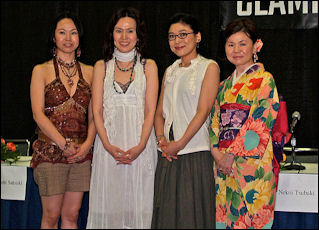
Mangaka Clamp History of Manga: A History of Manga dnp.co.jp/museum ; Manga Gaku matt-thorn.com/mangagaku ; Brief History of Manga comicreaders.com ; Tokyo Manga and Anime Shops : Nakano Broadway is a shopping street in Nakano Ward that houses many shops selling items related to pop idols, manga and anime characters. Tokyo Character Street is located on the Yaesu side of JR Tokyo station. It is an 80-meter-long underground street with 15 shops offering hundreds items bearing likenesses of anime figures like Doremon and Ultraman and new characters like NHK mascots Zoomin and Charmin and Monkey D. Luffy from “One Piece” as well characters like Totoro form Miyazaki’s Studio Ghibli. Manga Magazines and Publishers: Shonen Jump shonenjump.viz.com ; Viz Media www.viz.com ; Tokyopop tokyopop.com
Otaku Urban Dictionary urbandictionary.com ; Danny Choo dannychoo.com ; Otaku Dan Blog otakudan.com ; Otaku Generation Blog generationotaku.net ; Dumb Otaku dumbotaku.com Otaku story in the Washington Post Washington Post ; Otaku History Wikipedia article Wikipedia ; Academic Pieces on the History of Otaku cjas.org ; cjas.org and cjas.org ; Early Piece on Otaku (1990) informatik.hu-berlin.de ; Man, Nation, Machine informatik.hu-berlin.de ; Otaku from Business Perspective nri.co.jp/english ; Otaku Sites The Otaku, Anime and Manga Portal and Blog theotaku.com ; Otaku World, Online Anime and Manga fanzine otakuworld.com ; Otaku Magazine otakumag.co.za ; Otaku News otakunews.com ; Danny Choo dannychoo.com ; Spacious Planet Otaku Blog spaciousplanet.com ; Otaku Activities Maid Cafes stippy.com/japan-culture ; Male Maid Café yesboleh.blogspot.com ; Akihabara Book: “The Best Shops of Akihabara---Guide to Japanese Subculture” by Toshimichi Nozoe is available for ¥1,000 by download at http://www.akibaguidebook.com Akihabara Murders : See Government, Crime, Famous Crimes . Websites: Picture Tokyo picturetokyo.com ; Akihabara News akihabaranews.com ; Akihabara Tour akihabara-tour.com ; Otaku story in Planet Tokyo planettokyo.com
Famous Contemporary Manga Artists
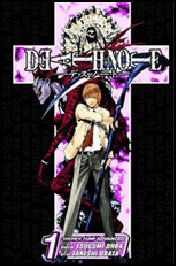
Naoki Urasawa has created manga that have sold over 100 million copies. He produced the highly successful “20th Century Boys”, “Pluto” and “Bill Bat” series. He has also released a rock album called “½ Century Man”. “20th Centry Boys” fills up 4,800 pages in 24 volumes of bookstore manga and won a number of awards. More than $60 million---a Japanese record---was spent on bringing the series to movie theaters in a disappointing trilogy released in the late 2000s.
“Slam Dunk”by Takehiro Inoue is one of the most successful manga of all time. Serialized in Shuan Shonen Jump between 1990 and 1996, it passed the 100 million sales mark in 2003. Basketball was thought to be a difficult subject to tackle with manga but Inoue found a loyal fan base by creating appealing characters and using his drawing skills to capture the speed and excitement of the game. Inoue’s “Vagabond”, about the legendary swordsman Musashi, and” Real”, about wheelchair basketball players, have also been big hits.
CLAMP is a team of four women’satsuki Igarashi, Ageha Okawa, Tsubaki Nekoi and Mokona---who have worked together since 1990 when they were part of a club of amateur manga artist and made their debut with a manga version of the Hindu classic the Rig Veda. Okawa writes the stories; Igarashi does the art design and Mokona and Nekoi draw the manga, with Mokona specializing in realistic detail and Nekoi drawing the cute characters. Their wide range of manga includes, “CardCaptor Sakura”, aimed for primary school girls; “X”, a violent, near-future fantasy aimed at middle school girls; and “XXXholic”, a manga designed for teenage boys; and “Chobits”. They have a huge base of fans that buy anything they make and have had their work featured in art gallery exhibitions.
Osamu Akimoto’s “Korchira Katsushika-ku Kamerair Sen-mae Hashutsujo” has been produced every week for 30 years in Shonen Jump and appeared in 150 paperback volumes as of 2006. Akimoto has not taken a break during the 30 years he produced the series, the main character is Ryo-san, a hapless middle-aged policeman with instantly recognizable exaggerated eyebrows.
One of Japan's most famous contemporary manga cartoonists is Kenshi Hirokane, a law school graduate who worked for Panasonic for three years before taking up comic book drawing. After one of his early manga, about an electronics company executive, became a popular series applications for the position the described increased at Japanese companies. Manga artist Akira Sasso is famous for poking fun at middle class life.
“Death Note” was created by manga artist Takeshi Obata, and writer Tsugumi Oba.
Rumiko Takahashi
Mangaka Rumiko Takahashi has sold over 170 million volumes and had work sold in 25 countries and translated into 30 languages with a steady output that lasted for more than 30 years, beginning in 1978 when she was a university student. “Uruseo Yatsura”, “Ranma ½”, Inuyasha” and “Maisson Ikkoku” are known t by almost everyone in Japan over the age of 10.
Takahashi is known for giving a woman’s touch to manga for boys and creating material that evoked an otaku (nerd) interest in kawaii (cuteness). Perhaps her most memorable character is Lum, in “Uruseo Yatsura”, a sexy, bikini-clad heroine with demon’s horns who arrives one day from another universe to disrupt the life of an ordinary earth boy, Arturo Moroboshi. Another memorable character, Kagome Higure, from “Inuyasha”, is a middle school students who slips back in time to the warring States period in the 15th and 16th centuries and joins forces with a hanyo (half human, half yokai fairy) to battle an Naraku, an evil monster that repeatedly changes into new grotesque forms.
Takahashi is the daughter of maternity clinic doctor in Niigata, She read manga magazines like Shohen Sunday ever since she was small and was encouraged by her elder brother to draw. She said she rarely knows the storyline of her stories when she begins and always leaves open room to improvise. “My story in a way automatically develops according to the characteristics of the characters.” She is also known for reversing traditional sexual roles, making her heroines strong and the male protagonist weak. “I just felt everything became possible in manga and people began to read manga openly and fairly compared to the time when I debuted.”
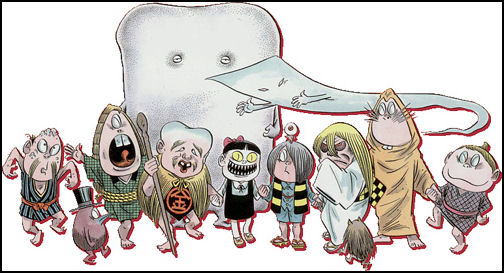
Kitaro characters
Shigeru Mizuki and Kitaro
Shigeru Mizuki (1922- ) is a revered manga artist and creator of Kitaro. He was sent to Rabaul, New Guinea during World War II and lost his arm there, an event he described in his manga. He thinks a great deal about yokai (Japanese supernatural beings) and manga and sleeps 11 hours a day. After turning 85 in 2007 he said he stopped thinking of young girls and started becoming obsessed with death, but is not afraid of it.
Mizuki loved Edo art and ukiyo-e wood prints. Among his works is the ultimate yokai parade---a series of pictures called Yokaido Gojusantsugi, punningly named after Utagawa Hiroshige's 19th-century ukiyo-e series Tokaido Gojusantsugi, or 53 Stations of the Tokaido Road. Like the original prints, each Yokaido picture shows scenery from a journey between the Kanto and Kansai regions. But in Mizuki's version, the iconic landscapes are populated with hundreds of yokai. [Baker, Op. Cit] Mizuki says he loved looking at scary paintings of the Buddhist vision of hell at a nearby temple when he was a boy, and he took his inspiration from yokai monsters of the past, especially those of ukiyo-e artist Toriyama Sekien (1712-1788).
Mizuki's long-running manga and anime series Gegege no Kitaro has featured dozens of traditional yokai characters. One prominent example is Konaki Jiji, who looks like an abandoned baby until a luckless passerby picks him up, after which he turns into a crushingly heavy old man. “GeGeGe no Kitaro” is an anime based on the manga “Hakaba Kitaro” by Mizuki. It the story of Kitaro, the last living member of a tribe of ghosts that have emanated from his dead mother’s decayed body. Kitaro is protected and accompanied by the eyeball of his father, an expert on “yokai.” Kitaro first appeared in 1960 and has been and a television anime four times.[Source: Tom Baker, Daily Yomiuri, December 2010]
But Mizuki hasn't just followed in the footsteps of earlier artists; he gave yokai new social roles. Zilia Papp writes that yokai long ago represented things that were truly strange and scary---diseases, forces of nature, foreigners---but now they are mainly cute, nostalgic reminders of an idealized past. The popularity of Gegege no Kitaro had a lot to do with this shift, which Papp calls "mascotization."
'Barefoot Gen' Creator Keiji Nakazawa
Manga artist Keiji Nakazawa is best known for "Hadashi no Gen" (Barefoot Gen), the semiautobiographical story of his experiences surviving the 1945 atomic bombing of this city. A staunch opponent of nuclear weapons, Nakazawa was born in Hiroshima. He experienced the atomic bombing at age 6, when he was 1.2 kilometers away from ground zero, and lost his father, older sister and younger brother in the bombing. His younger sister, who was born shortly after, died not long after the end of the war. [Source: Yomiuri Shimbun, December 26, 2012]
The Yomiuri Shimbun reported: “Inspired by manga artist Osamu Tezuka, Nakazawa decided as a child that he would become a mangaka. He got a job as a sign maker soon after graduating from middle school, but moved to Tokyo in 1961 to pursue his dream. His mother died in 1966. After the cremation, he found that her remains had been reduced almost completely to ash, preventing him from being able to collect some of her bone fragments, as is customary. He believed this was due to the effects of the radiation from the bomb, and later wrote that the incident enraged him, since he felt the atomic bomb had even deprived him of his mother's bones.
Motivated by the event, two years later saw the publication of "Kuroi Ame ni Utarete" (Struck by black rain), Nakazawa's first work on the atomic bombing. "Hadashi no Gen" was first published as a series in the weekly manga magazine Shukan Shonen Jump, and ran from 1973 to 1987 under several different publishers. The comic was later published in book form, which has sold about 10 million copies.
The story of Gen has been translated into about 20 languages. Its English version was completed in 2009. With the royalties from his work, Nakazawa launched a production company to make animated versions of "Hadashi no Gen" and "Kuroi Ame ni Utarete" in 1983 and 1984, respectively. He has made more than 10,000 donations to the Hiroshima Peace Memorial Museum, including a draft of the first installment of an uncompleted sequel for "Hadashi no Gen," in which he planned to depict the later life of the main character.
Nakazawa announced his retirement in September 2009, citing vision problems due to cataracts and retinopathy. He He was diagnosed with lung cancer in the summer of 2010 and died of the disease in December 2012. . On Aug. 8, 2011, Nakazawa attended the memorial ceremony for the victims of the Hiroshima bombing for the first time. He said after the ceremony: "It's important to continue [holding this ceremony], but a ceremony alone cannot fully relate the dreadfulness of nuclear weapons. I'm again reminded of how important it is for people like me who remember [the bombing] to tell people about [our experiences] for as long as we live.”
Monkey Punch and Lupin III
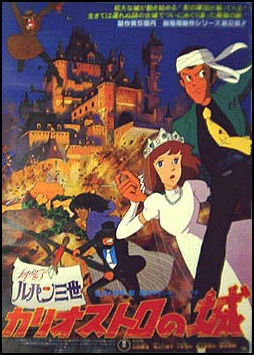
Monkey Punch is the artist and creator of “Rupan Sansei (Lupin III)”, a popular manga and anime series about an international burglar and thief and his pals and the members of the International Criminal Organization that make it their job to track him down.
The first “Lupin” appeared in the debut issue of Weekly Manga Action, which was inaugurated in 1967. It was loosely based on the Arsene Lupin novel series, James Bond movies and Tom and Jerry cartoons. The manga was turned into a popular animated television show that debuted in 1971 and appeared again later in the 1970s and again in the 1980s. The series also generated annual TV specials, feature anime films, novels, a live-action film, musical and video games.Monkey Punch said, "Lupin reminds us of the joys of not being too stressed. It's okay to be a little bit mischievous and carefree. I want him to stay cocky," Kato said about the character he created.
Monkey Punch was born in 1937 in Hamanakacho, a town of 14,000 in eastern Hokkaido. When he was young he enjoyed drawing and copying pictures of the popular character Norakuro, a black-and-white dog. After high school he went to Tokyo where he attended a vocational school and created stories for fanzines he and some of his friends created. His work was discovered by an editor of Futabasha, the publisher of Weekly Manga Action. Monkey Punch currently works from a studio in Sakura, Chiba Prefecture. He says that he does 70 to 80 percent of his work digitally. His name was assigned to him by his editor who thought his character’s faces looked like the faces of monkeys.
Monkey Punch is a professor at Otemae University in the university's Media and Arts department. In 2006 he decided to teach under his real name at the university in Nishinomiya, Hyogo Prefecture, to nurture the next generation's mangaka artists. [Source: Yusuke Sakurai, Yomiuri Shimbun, January 3, 2011]
Yusuke Sakurai wrote in the Yomiuri Shimbun, “His students concentrating on drawing manga, Prof. Kazuhiko Kato walked around the Otemae University classroom, observing their hands and occasionally remarking on their technique. "The way you use your hands directly impacts on your characters' emotions. It's something to be aware of when you're drawing," said Kato, his usually friendly face turning serious.
"You shouldn't rest on your laurels just because you've drawn Lupin," mangaka Osamu Tezuka told him when Kato released "Lupin III"---a best-selling fictional story about a clever thief---in 1967. It was two years after Kato debuted as a mangaka.
His idol was strict but the advice was given calmly, Kato recalled. Since then, Kato has released more than 100 stories, including a historical work. "I could produce those manga because of Mr. Tezuka's encouragement," Kato said. Tezuka's advice has continued to resonate strongly. About 20 years ago, when manga was still drawn by hand using pens and pencils, Kato began using computers to create manga as he believed "digital would be the way of the future."
History of Lupin III

Lupin III cosplayers Makoto Fukuda wrote in the Yomiuri Shimbun, In the anime and manga, the antics of five distinctive characters--Lupin III, grandson of fictional master thief Arsene Lupin; right-hand man and marksman Daisuke Jigen; maverick sword master Goemon Ishikawa; beautiful thief and femme fatale Fujiko Mine; and Detective Zenigata, whose mission in life is to arrest Lupin--are followed via numerous stories, ranging from hard-boiled episodes to comic tales. [Source: Makoto Fukuda, Yomiuri Shimbun, August 19, 2011]
Lupin III was first adapted into anime format in 1971. A commonly held view at that time equated anime with children, so director Masaaki Osumi's series, made with adult viewers in mind, was an unusual experiment and didn't immediately resonate with viewers. Isao Takahata and Hayao Miyazaki, among others, were drafted to provide a comic touch and boost the show's low ratings, but the plug was pulled on the series after 23 episodes.
Yet the series' reputation grew whenever it was rebroadcast, and the anime was serialized twice. The manga also spawned five films, including the highly popular Lupin III: The Castle of Cagliostro, directed by Miyazaki. A longstanding yearly tradition of anime special TV programs, yet another part of the Lupin III media franchise, also garner consistently high ratings .
"If you think about it, it is really a strange situation," commented Monkey Punch on Lupin III and its ongoing success. "The manga was only serialized in magazines for about five years overall. If it hadn't been made into anime, it wouldn't have enjoyed such long-term support." The mangaka has always given anime makers freedom to move with their adaptations of Lupin III as long as they remain faithful to the five characters.
"I have to be practical about it. Lupin III is no longer 'mine' when it's being made into anime. Many producers and animators have played with the work. This is alright with me, there are many Lupin IIIs," he said. Yasuo Otsuka, animation director of the early TV adaptations of Lupin III and The Castle of Cagliostro, reiterated, "I was allowed to play around during the Lupin series."
Drawing on his fascination with, and extensive knowledge of military vehicles and guns, Otsuka was responsible for creating Lupin's gun, Walther P38, and his Fiat 500 car. "It was really fun--I was able to draw whatever I wanted, as much as I liked. Up until then, the idea of drawing elaborate machinery in anime was unheard of," he recalled. Like Otsuka, a number of creators have added their own spice to Lupin III, the end result being a series of "dishes" that defy categorization. This is part of the charm and versatility of Lupin III.
Fujiko Fujio A
Fujiko Fujio A, the pen name of cartoonist Motoo Abiko, created Kaibutsu-kun and other classic manga. Fujiko Fujio A, 77, was part of the Fujiko Fujio duo until 1987 with his partner Fujiko F. Fujio (1933-1996) whose real name was Hiroshi Fujimoto. Together, they created many popular cartoons such as Obake no Q-taro. This year, Fujiko celebrated his 60th anniversary of working as a cartoonist. [Source: Makoto Fukuda, Yomiuri Shimbun, December 23, 2011]

“Ninja Hattori-kun” (“Little Ninja Hattori”) is about Ninja Hattori, who leaves his hometown of Iga, home to one of the two most famous ninja schools, and goes to live with a 10-year-old boy named Kenichi, and causes mischief. The series started in 1964 in the popular comic magazine Shonen. It was adapted as a 1966-67 live-action TV drama also as a 1981-87 anime. It became a live-action movie in 2004. "Hattori-kun resembles Kaibutsu-kun. But where Kaibutsu-kun is self-righteous, Hattori-kun, as a ninja, has dedicated himself to Kenichi. He doesn't change his facial expression, but conveys his feelings by subtly moving his tight-lipped mouth," Fujiko said.
“Pro Golfer Saru” is about a A talented boy golfer, Sarumaru, fights villainous professional golfers. The series started in 1974 in the weekly Shukan Shonen Sunday magazine. The anime aired from 1985 to 1988. "The weekly magazine editor was strongly opposed to the manga, because golf was not popular even among adults. But now there are manga series specifically about golf. I'm glad to hear young professional golfers say they saw the anime and decided to become a golfer," Fujiko said.
“Warau Salesman” is about a wicked salesman, Fukuzo Moguro, who uncovers the greedy secret natures of ordinary people in this manga, whose title means "smiling salesman." In 1968, the character was first featured in Big Comic magazine in a one-shot story titled Kuroi (Black) Salesman. The series started in 1969 in Manga Sunday. It was adapted as a 1989-92 anime and a 1999 live-action TV drama. "The anime was aired in a TV program from 9 p.m. to 11 p.m. Viewers enjoyed the way Moguro plays the devil with greedy people. Unexpectedly, it was popular with women," Fujiko said.
Fujiko Fujio A’s popular manga series Kaibutsu-kun tells the story of the prince of Kaibutsu (monster) Land, his three monster companions--Dracula, Wolfman and Frankenstein--and their adventures in Human Land.
A film version of Kaibutsu-kun finally hit the silver screen in 2011 after a TV drama of the same name aired in 2010. Starring Satoshi Ono of the popular idol group Arashi, the film was directed by Yoshihiro Nakamura, 41, whose other films include Ahiru to Kamo no Coin Locker (The Foreign Duck, the Native Duck and God in a Coin Locker), Team Batista no Eiko (The Glorious Team Batista), Golden Slumbers and Chonmage Purin (A Boy and His Samurai).
The film opens with the prince's coronation as the king of Kaibutsu Land, where he is subsequently booed by his subjects for his self-righteous manner. Shocked, the prince decides to travel to Human Land with his three monster friends on a flying dragon, but they are blown off course by a tornado into the Kingdom of Curry. In addition to dynamic 3-D scenes, the film also features magnificent shots of India.
On the creation of Kaibutsu-kun Fujiko said: At that time, there were various trends in manga books. There was an atmosphere at Shonen Gaho, which started the Kaibutsu-kun series in 1965, where we were allowed to draw manga pretty freely. So I got carried away and went bonkers...In the story, the prince grew up thinking about the pros and cons of self-righteousness. If a cartoonist is too preoccupied with the popularity of his creations, then he won't be able to continue with his career. Cartoonists create what they really want to draw. In that sense, it was good for me to have stuck to my guns.
Suzue Miuchi and 35 Years of Garasu no Kamen
“Garasu no Kamen” (“The Mask of Glass”) by Suzue Miuchi has sold over 50 million copies. Volume 46 was released in the autumn of 2010. Miuchi recently told The Yomiuri Shimbun she is still full of ideas and eager to keep drawing.” [Source: Tomoko Nishida, Yomiuri Shimbun, October 29, 2010]
Tomoko Nishida wrote in the Yomiuri Shimbun, “The story is centered on Maya Kitajima, an ordinary-looking but extremely gifted starlet whose talent is discovered by a former actress who is about to launch a new theater company and a revival of Kurenai Tennyo (The Crimson Goddess). Maya joins the troupe, where she develops a rivalry with Ayumi Himekawa, a gifted and beautiful actress from a well-off family.” In volume 46, Maya and Ayumi, who finally begin rehearsing for Kurenai Tennyo after overcoming much difficulty, face further hardship. The cover of Volume 45 features Ayumi lying in a bed and hooked up to an intravenous drip, her eyes covered with bandages. Maya, meanwhile, is worrying about acting and her unrequited love. "She cannot perform the role of a goddess in a real sense unless she has a soul worthy of the role. Maya again is wondering what it means to play a goddess," Miuchi said.
“Miuchi was 24, but already in the eighth year of her career when her serial started to appear in Hana to Yume magazine in 1976. She said she had wanted to do a long-running piece that follows an otherwise ordinary character who is a genius in the arts, much like Osho protagonist shogi master Sankichi Sakata. That led to the start of what became Miuchi's lifework...Miuchi reviews her works repeatedly until she is fully satisfied before publishing them in book format.
First-run readers of Garasu no Kamen are now in their 40s and 50s, and fans stretch across two or three generations. The manga, which Miuchi compares to "family members with whom I have spent an important part of my life together," also is important in the life of many readers. "When I work on the manga, I suddenly become Maya, as if flipping a switch. Age doesn't really seem to matter much when it comes to acting or writing manga," she said.
Garasu no Kamen has been made into a TV series and anime. It also got a makeover in the form of a stage production by kabuki actor Bando Tamasaburo and director Yukio Ninagawa. Art imitated art when noh actor Umewaka Gensho created a noh play based on Kurenai Tennyo. The manga incorporates details about theater direction, interpretation and acting in general. But surprisingly, Miuchi has never visited an actual theater to research her work. "It would hinder my imagination from flying. Everything is created inside my brain. I don't care what others say; I just want to draw what everybody will find interesting."
Image Sources: 1) Sailor Moon site 2) Tezuka English fan site 3) 5), Japan Zonem 4) Hector Garcia, 6) Takarazuka site
Text Sources: New York Times, Washington Post, Los Angeles Times, Daily Yomiuri, Times of London, Japan National Tourist Organization (JNTO), National Geographic, The New Yorker, Time, Newsweek, Reuters, AP, Lonely Planet Guides, Compton’s Encyclopedia and various books and other publications.
Last updated January 2013

